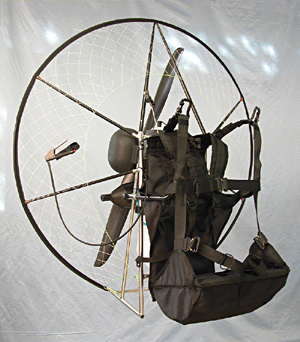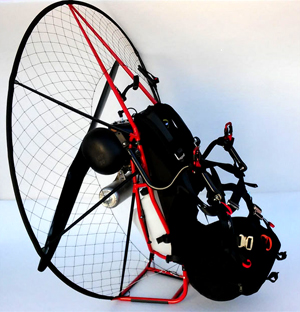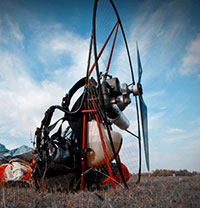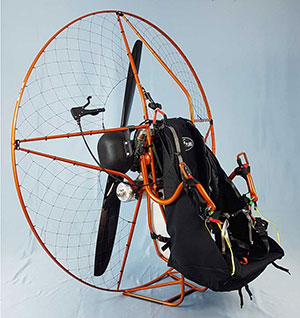|
Miniplane Paramotor
Using the Top 80 Motor from Italy
 The new generation of light-paramotors is born!
The new generation of light-paramotors is born!
MINIPLANE CONSTRUCTION PHILOSOPHY
The increase in performance of modern paragliders makes it possible to fly with almost one-half the power of a few years ago.
A little two-stroke engine, built with modern technology, can offer more then enough reliable power and much less weight. This makes the critical take-off run easier and safer.
The philosophy of a reliable Minimotor, combined with optimizing the resonance of the exhaust provides the pilot:
- Light weight
- Less vibration
- Easier to start
- Less fuel; less to carry
- Less weight means a lighter frame
- Less weight in flight means a smaller, easier to inflate Paraglider
- Less weight means running faster, more erect, and under control - not struggling with a heavy load
Miniplane Models:
Miniplane Top 80 Flex CageClassic Miniplane Style Paramotor |
|
Miniplane Flex Cage Top 80 ABMThe Miniplane ABM pioneered the revolutionary "Swan" style Side Arms using a low-mid attachment point. This system keeps an excellent degree of stability while at the same time allows for "active" pilot weight shift. The Miniplane ABM allows great weight shift ability without the instability found on previous systems by other manufacturers. The feel of this system is natural because it returns to straight and level flight as soon as the pilot relaxes turning input. Weight: 44 lbs.
Miniplane Top 80 PSF Flex Cage: $6,150Add To CartView Cart
Miniplane Top 80 ABM Flex Cage: $6,700Add To CartView Cart |
New Cateye Frame:  Classic Frame:  |
Miniplane Long Range ParamotorNew LR Rigid Cage ABM with TOP 80! |
|||||||||||||||||
Miniplane Long RangeFly High - Fly Far! The Miniplane Long Range project is based on the innovative Rigid 150 Paramotor made by Per Il Volo. The bigger 140 prop is made possible by a new gearbox with a new reduction ratio that allows the Top 80 engine to use a much longer and wider propeller than ever before! This machine has better aerodynamic efficiency and gains a significant percentage of thrust both in take-off and at high speed while simultaneously reducing noise. Now also available with
Miniplane Long Range Paramotor PricesFor both 140 and 150 size Cages
|
Miniplane LR Fly High, Fly Far with this new incredibly efficient and reliable Miniplane Paramotor! Now available with a Titanium Cage!! |
||||||||||||||||


